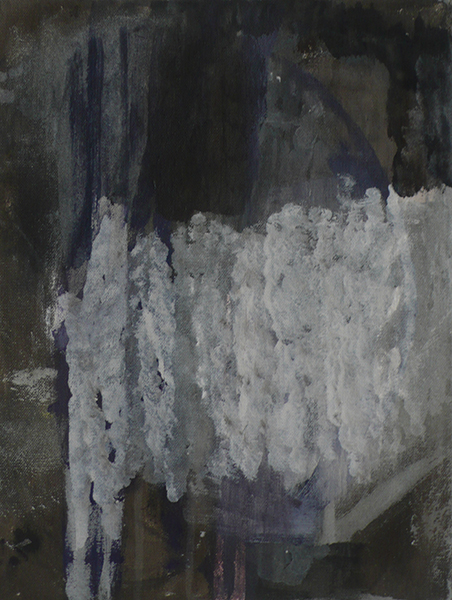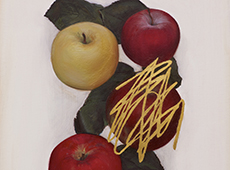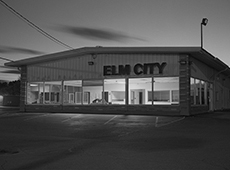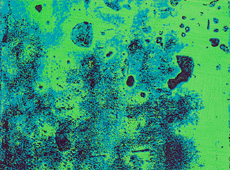Thoughts and ideas move around without any gravitational pull as if weightless. Painting earth’s experience; it grounds it in the real. The day to day can find its way into the work, a certain experience or event can be referenced, perhaps seemingly very minor and insignificant, and I wonder what is it doing showing up as it sometimes can. Usually it is subliminal.

© Vincent Hawkins. Courtesy of the artist.
I was looking at old black and white images on-line, and old film footage too, turn of the 20th century. Images of countless people. I thought about them, lives gone, unknown; how can we know these lives? I had been thinking it is only through language or records, such as these images, that lives are in someway preserved or registered. It wasn’t something I intended to paint about; in fact there is nothing about it that would make you think figures or faces.
There is nothing about this painting that looks like any of the things I saw in the pictures, but I recognise it as being related to, or originating from, that experience. It’s repetitious marks and shimmering qualities resonate like old film and photographs. It has a weathered look, and a sense that they are parts of a story which are hidden to us. The palimpsest of time and movement, a captured light imprisoned in the frame. It reminded me of a passage I had read:
“…to write? Because all this is going to vanish. The only thing left will be the prose and poems, the books, what is written down. Man was very fortunate to have invented the book. Without it the past would completely vanish, and we would be left with nothing, we would be naked on earth.”
— James Salter
Thoughts and ideas move around without any gravitational pull as if weightless. Painting earth’s experience; it grounds it in the real. The day to day can find its way into the work, a certain experience or event can be referenced, perhaps seemingly very minor and insignificant, and I wonder what is it doing showing up as it sometimes can. Usually it is subliminal. I may not recognise it for quite a time as belonging to something in my life.
…sometimes what we think is the work is not the work. Peripheral influences which can arise during the making or process may contain more of a felt experience than was at prime focus.
I read somewhere how one should have a wise blindness* when being creative. I rather respond to this approach, that play is an essential part of making, to be childlike, in “open mode,” as it were. It can lead to some very interesting results.
I recall a tutor once saying to me while painting a figure (diligently trying to get it “right”). He pointed to a dark form in the top left corner. “Who is this?” he said. “That’s nothing, its just a blob of paint, John.” “No it isn’t, you made that mark, why did you? That’s not a blob of paint, it’s not at all Vincent. That’s you. That’s you standing watching what is going on, watching yourself painting this figure.” I have thought about this a lot over the last few years. It’s slowly evolved significance. It has taught me that sometimes what we think is the work is not the work. Peripheral influences which can arise during the making or process may contain more of a felt experience than was at prime focus.
Vincent Hawkins lives and paints in London.
*Note: “wise blindness” from Rilke, Über Kunst:
Not any self-control or self-limitation
For the sake of specific ends,
But rather a carefree letting go of oneself:
Not caution, but rather a wise blindness…”
Subscribe to Tilted Arc
If you like this story, please consider subscribing. We are sticklers for privacy.
We will never sell or share your e-mail address.



